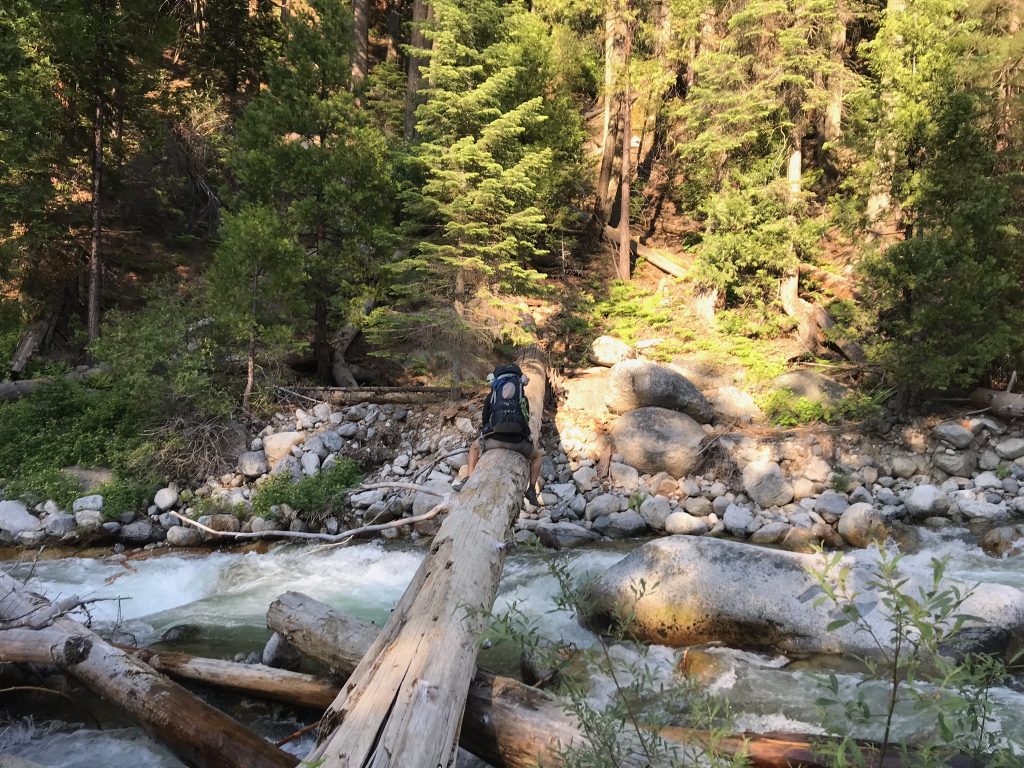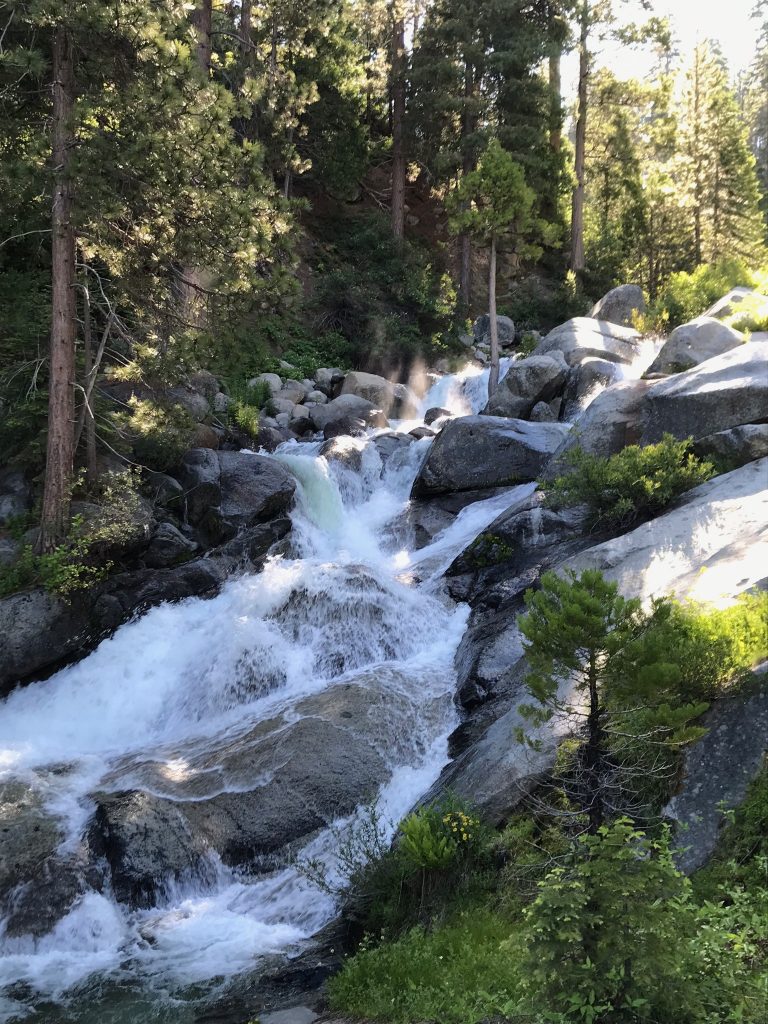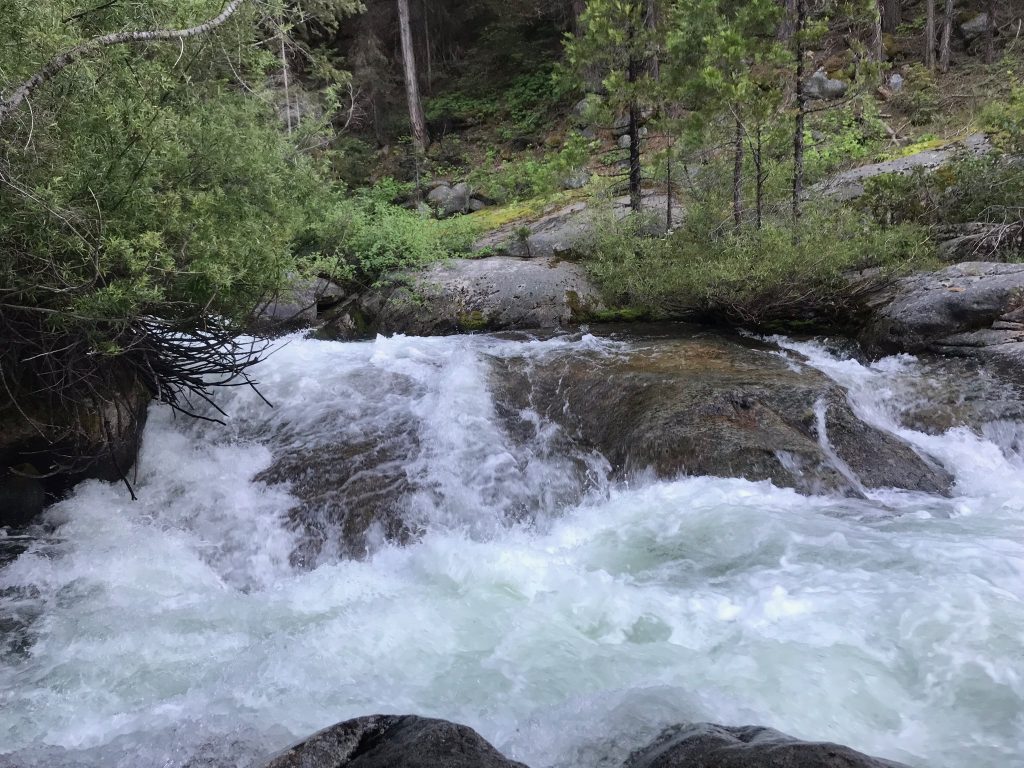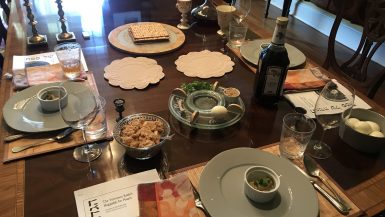On June 27th–the day after we quit our jobs–we hit the road!
Our gap year began with a 3 week adventure up and down the California coast (including Big Sur, LA, and a vineyard in Napa). This first jaunt helped us tear ourselves away from work in New York (where we had entrenched ourselves so deeply) and develop our traveling rhythm for the year to come.
After a few days of car-camping throughout Sequoia National Park, Victor’s parents, Fred and Tisna, dropped us at the Mineral King Ranger Station at 8am to set out on a 5 day backpacking loop. Victor had spent weeks meticulously planning our route through the backcountry, considering elevation, mileage, views, weather, and dozens of online reviews from other hikers. At the ranger station, we met our first of several trail angels—people who provide essential wisdom or life-sustaining support in the backcountry. As we were picking up our backcountry permit and paying for our mandatory bear canisters (which prevent black bears from rummaging through scented gear and food), she asked: ‘Do you have an ice axe and crampons?’
‘No,” we replied…”Is there still snow?’ (It was mid-July, after all.) The ranger went on to inform us that they had had unprecedented snowfall that year, so all the mountain passes Victor had linked together to form our route were still covered in snow and ice fields. From the sound of it, technical climbing gear would be vital for us to continue with our plan. While the ranger may have seemed more like a trail devil to disappointed Victor, I was grateful for the warning and we reworked our route on the spot. The new route would keep us away from slipping down a ravine covered in ice, however it meant less time in the high country, 1 alpine lake instead of 3, a nasty, poorly-graded 3 mile descent, and then turning around to come back the way we came rather than looping consistently through new terrain. These are precisely the on-the-spot changes that remind us we are mere tourists in nature’s territory, and that getting to the Sierra high country is not just a walk in the park.
A couple hours into the trail, we encountered a tall, red-headed man who had gotten dehydrated and was struggling to make it out—trail angel #2. Knowing we had plenty of water and a reliable filtration method, we let him chug our liter of orange Gatorade. Once the hiker finished drinking, his face flushed with renewed energy. “You know about the river crossings?” he asked. Apparently, because of the snowfall, the “creeks” on the map were actually rushing with white water. The appreciative hiker marked up our map with helpful information: “at Eagle Creek there’s a log you can shimmy across on…at Granite Creek, you can wade through if you bushwhack 200 yards upstream to where it’s narrow and you step carefully, but the water will still come up to your stomach.” We tucked each piece of wisdom away in our minds, and after making it across the 7 white water crossings on our 4-day route, we felt it had been a very fair trade!



As we continued along the trail, we exchanged knowledge of where and how to cross the raging rivers with every hiking party we encountered. Since there is no cell service and natural conditions are both ever-changing and vital to survival in the backcountry, word of mouth is the only means of communication we can depend on. An older couple (trail angels #3 and 4) told us they had lost their tent poles when crossing the top of a water fall, so we secured ours a little tighter. When a hiker who was on his way to summit Mt. Whitney lost his only water bottle on the same crossing, we got to double up on the Gatorade mitzvah and give him the empty bottle to use on the rest of his journey! In exchange, he gave us a cord we were missing to charge our UV water purifier (trail angel #5).
After four days in the back country, we realized that the custom of sharing trail wisdom is an essential component of the hiking community. Instead of ignoring the strangers you pass (like you do on the NYC subway), we greeted every hiker with, “where are you coming from? How are the conditions?” Every fellow hiker was treated with reverence—appreciation for how the wisdom from their journey might impact and intersect with our own. This camaraderie and interdependence with strangers really harkens back to a time when word of mouth information about conditions down the road was simply part of travel.
What would happen if we treated everyone we passed on the street the way we treat the angels on the trail? How much could we empathize with one another’s journeys? How would our journeys change by being and seeing the trail angels everywhere around us?






Leave a reply